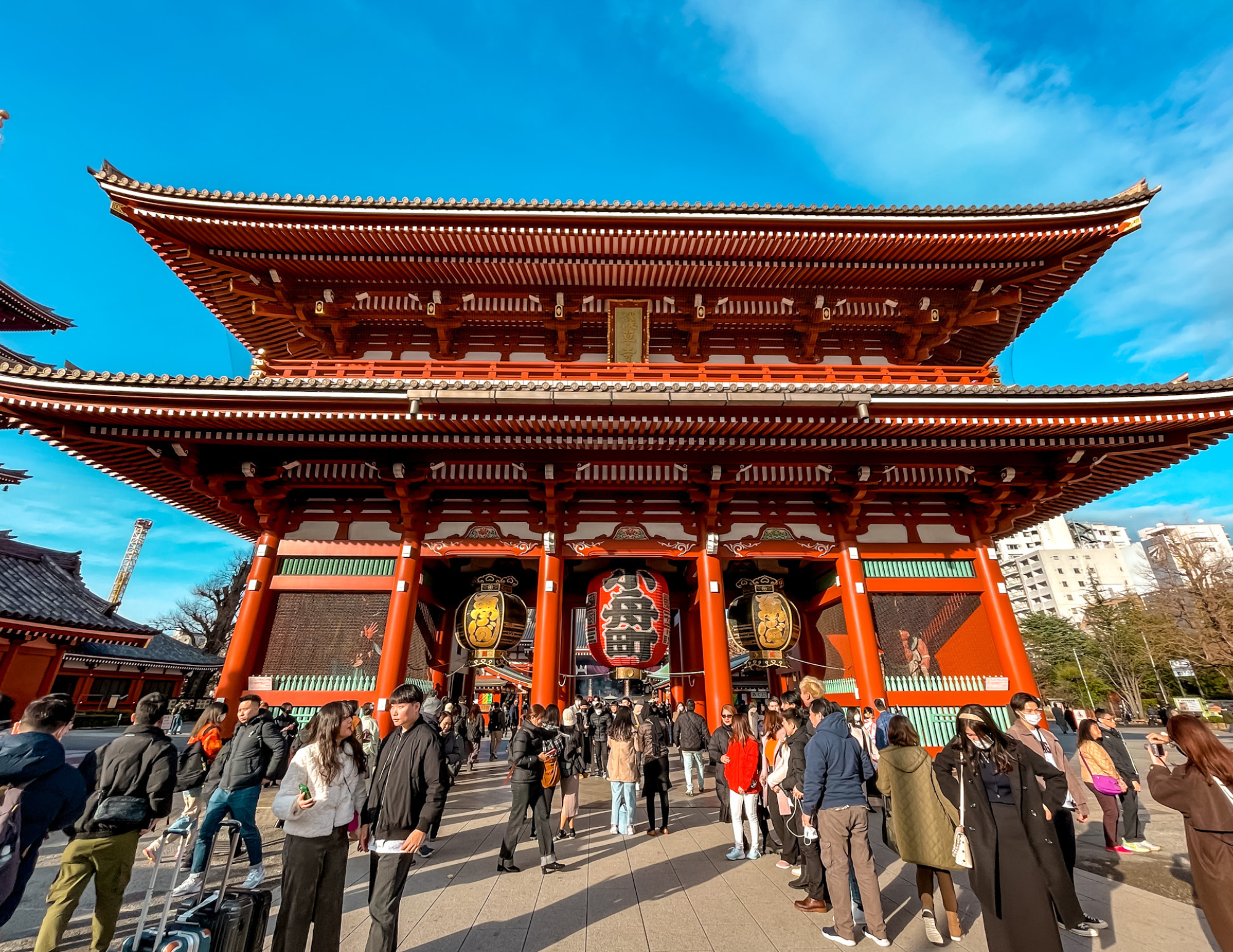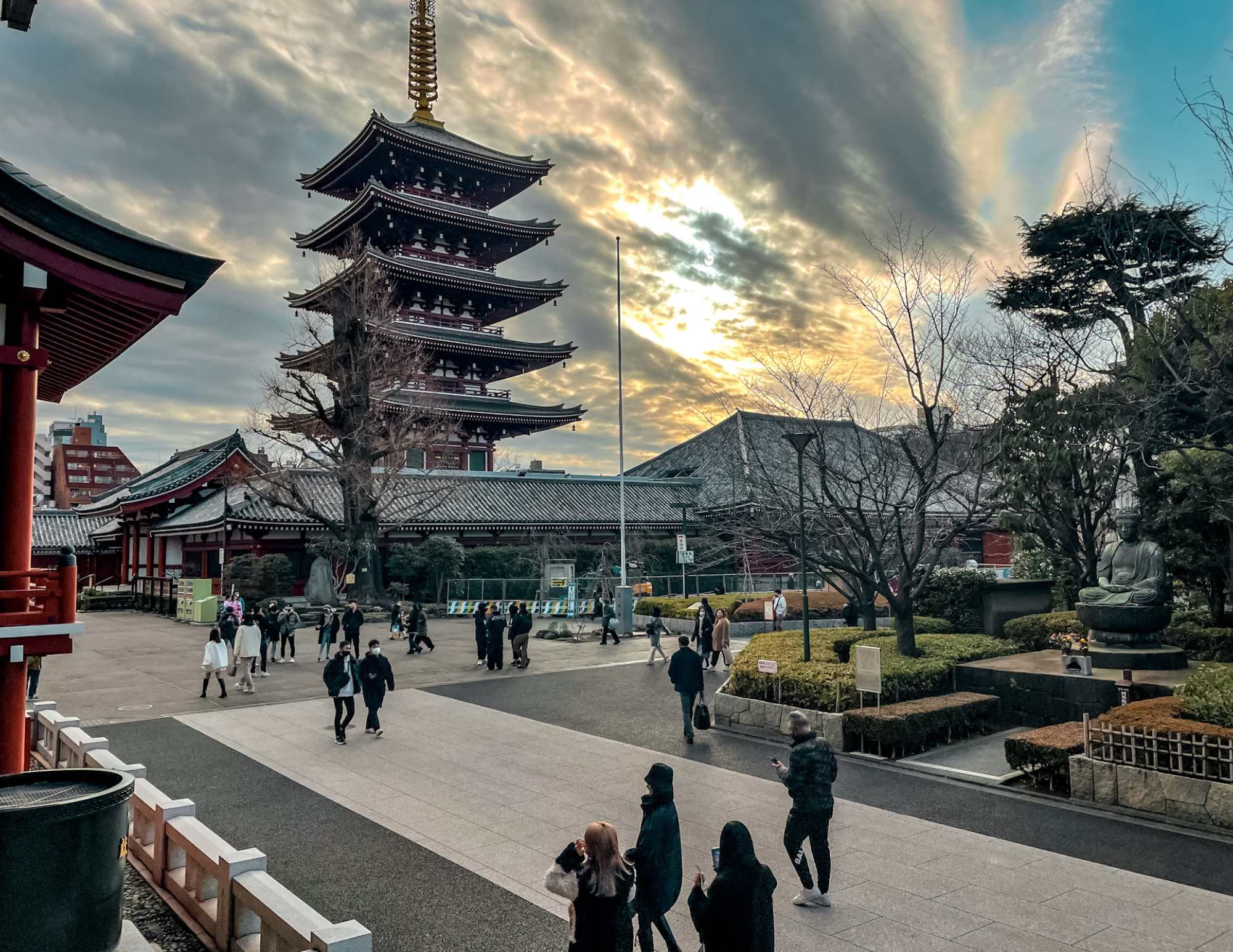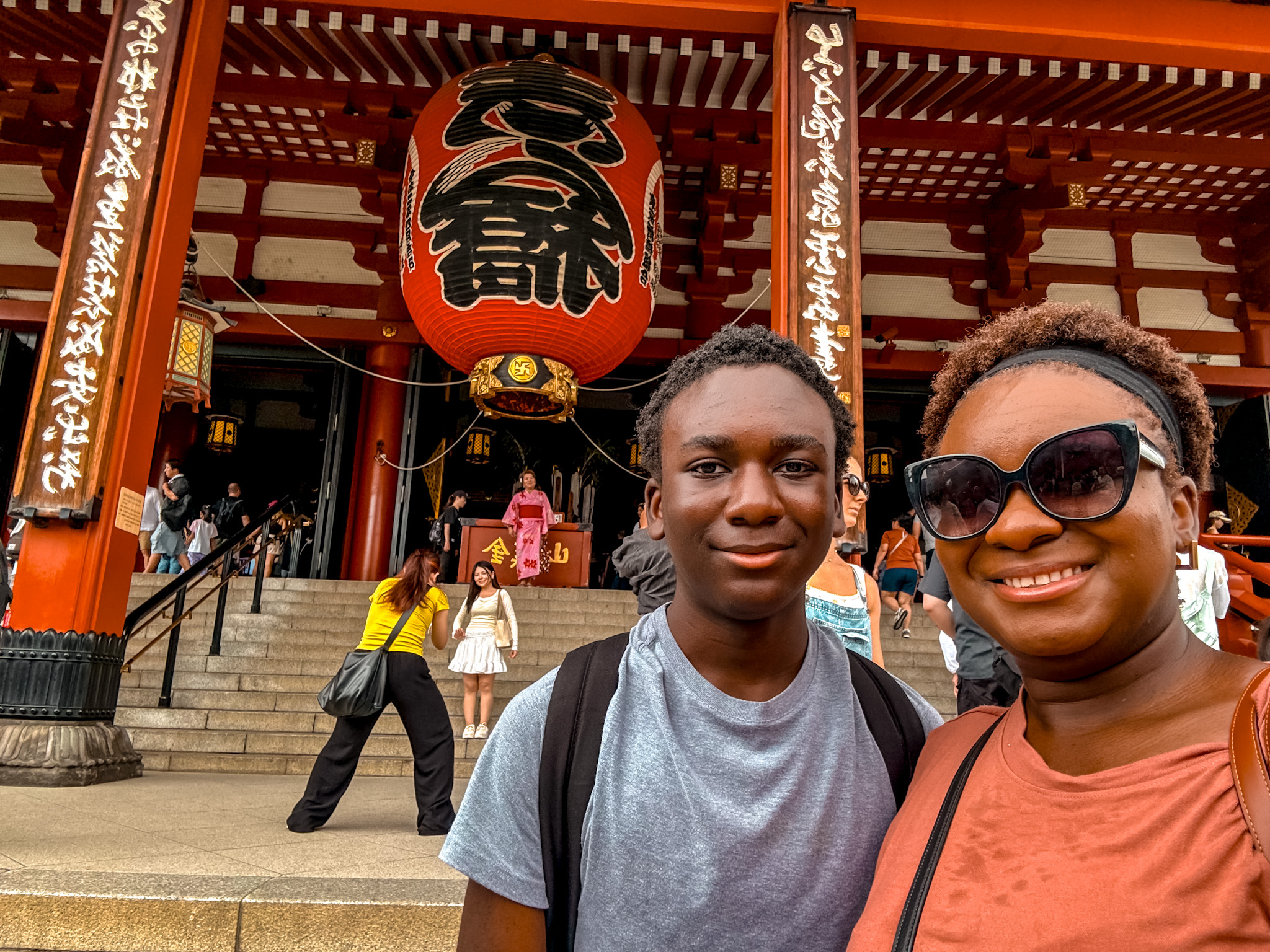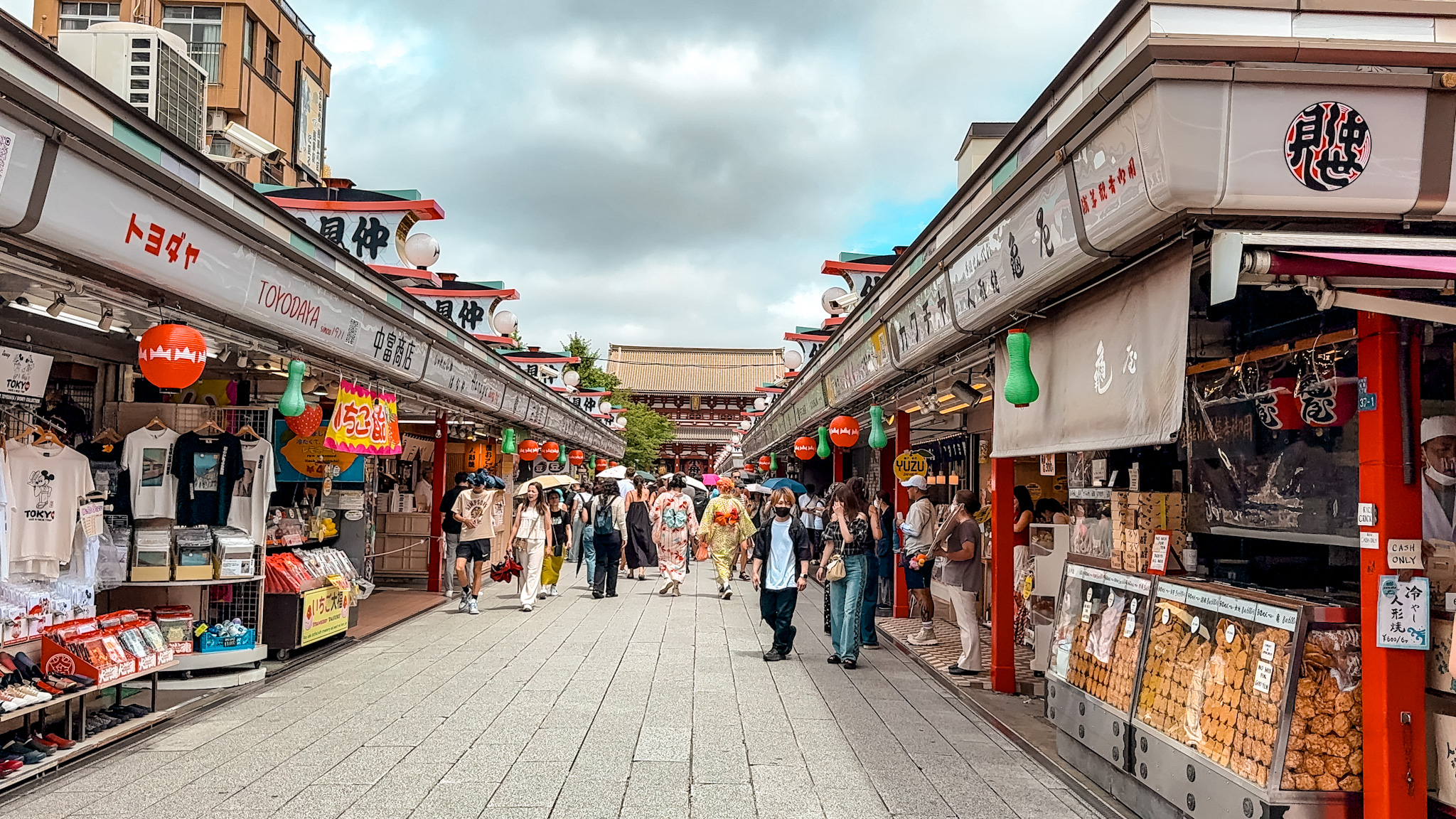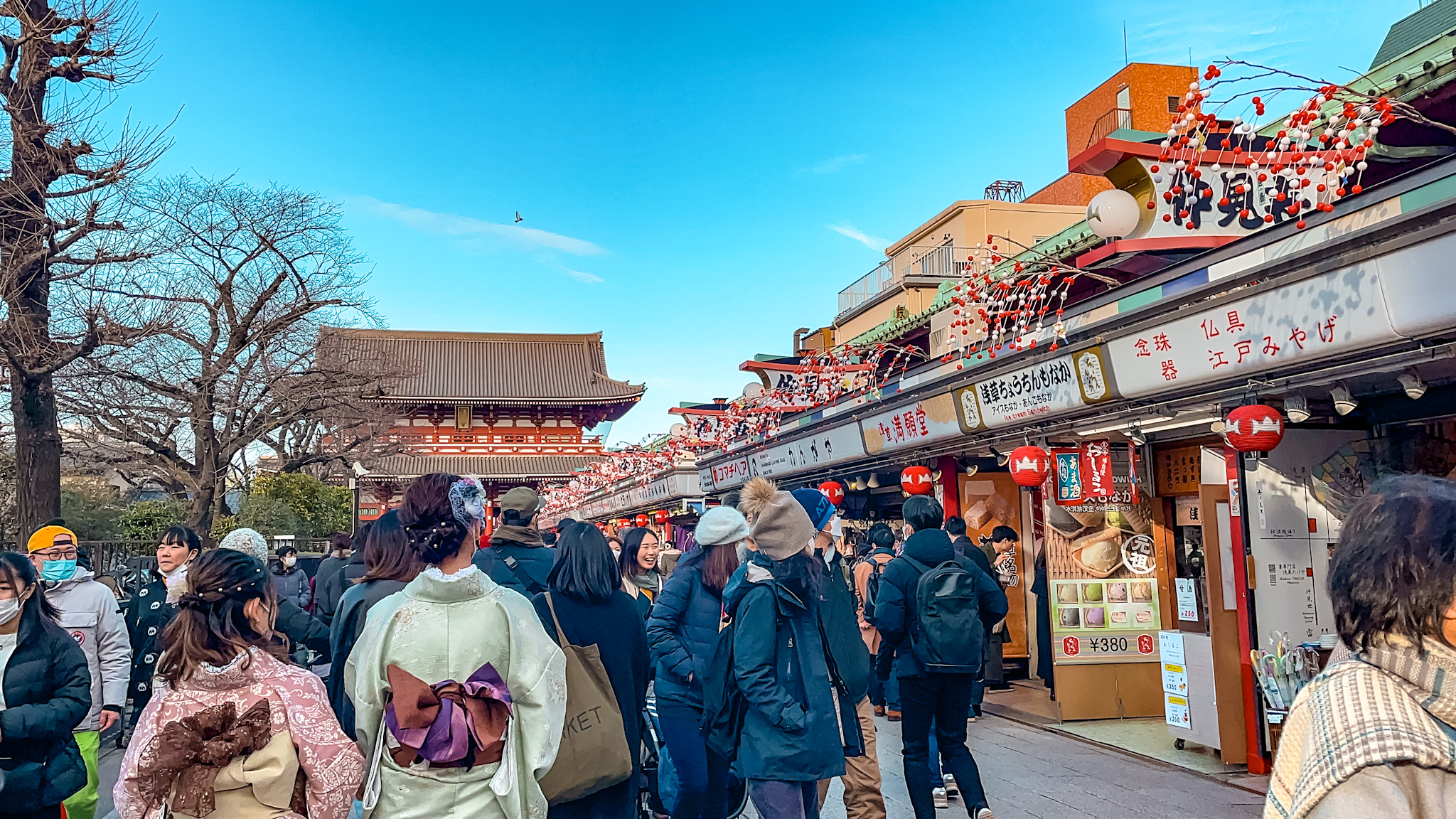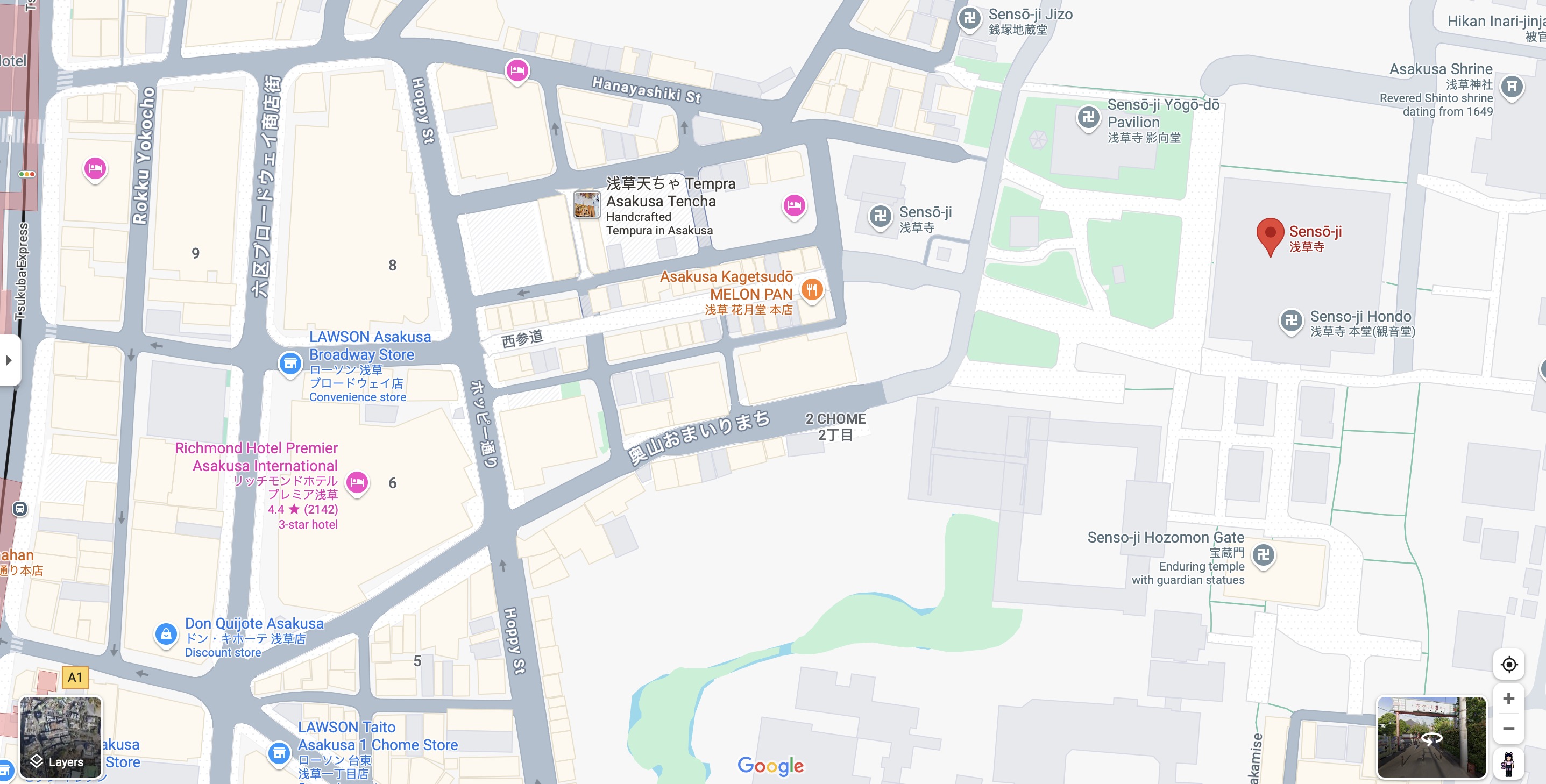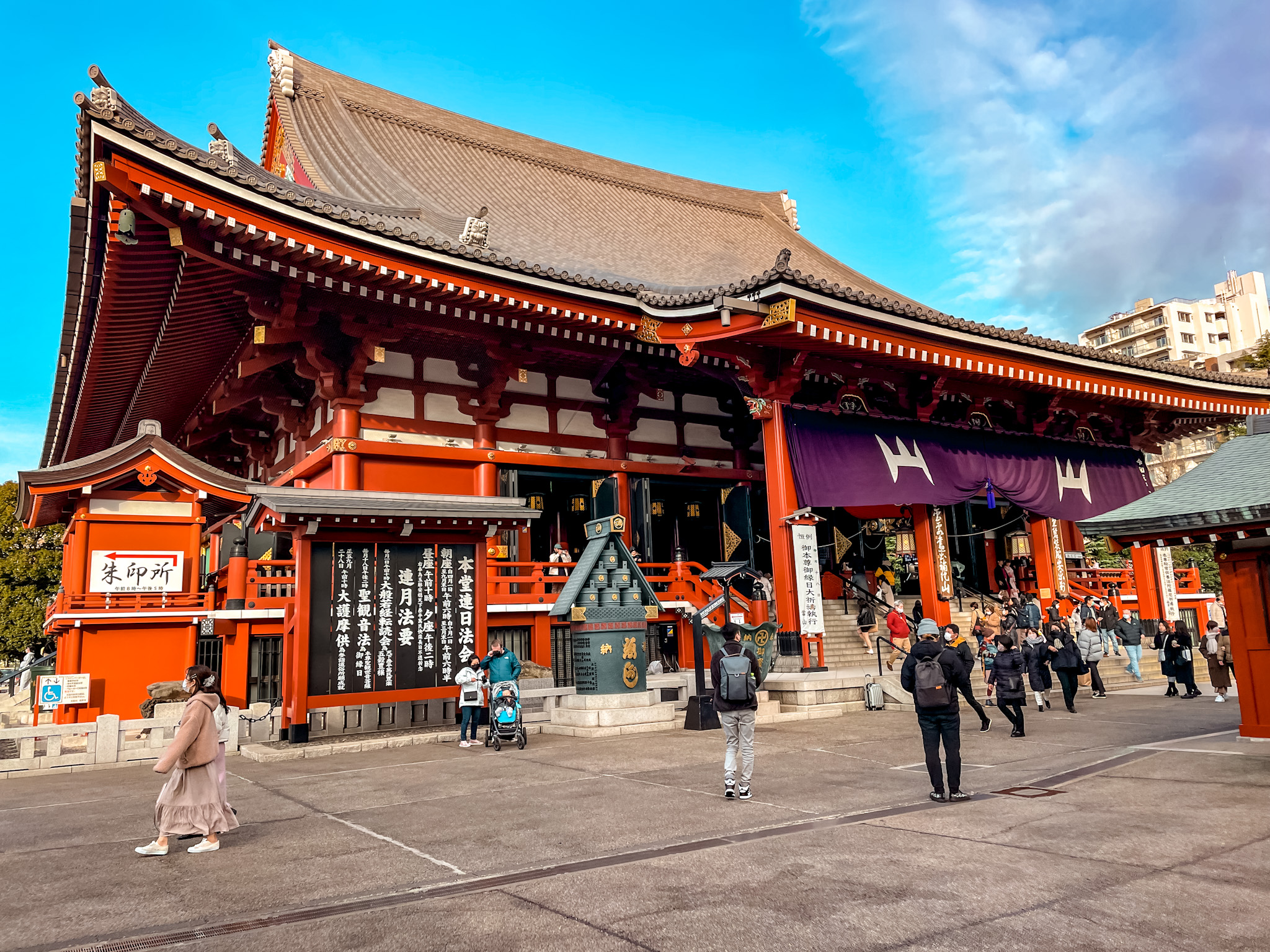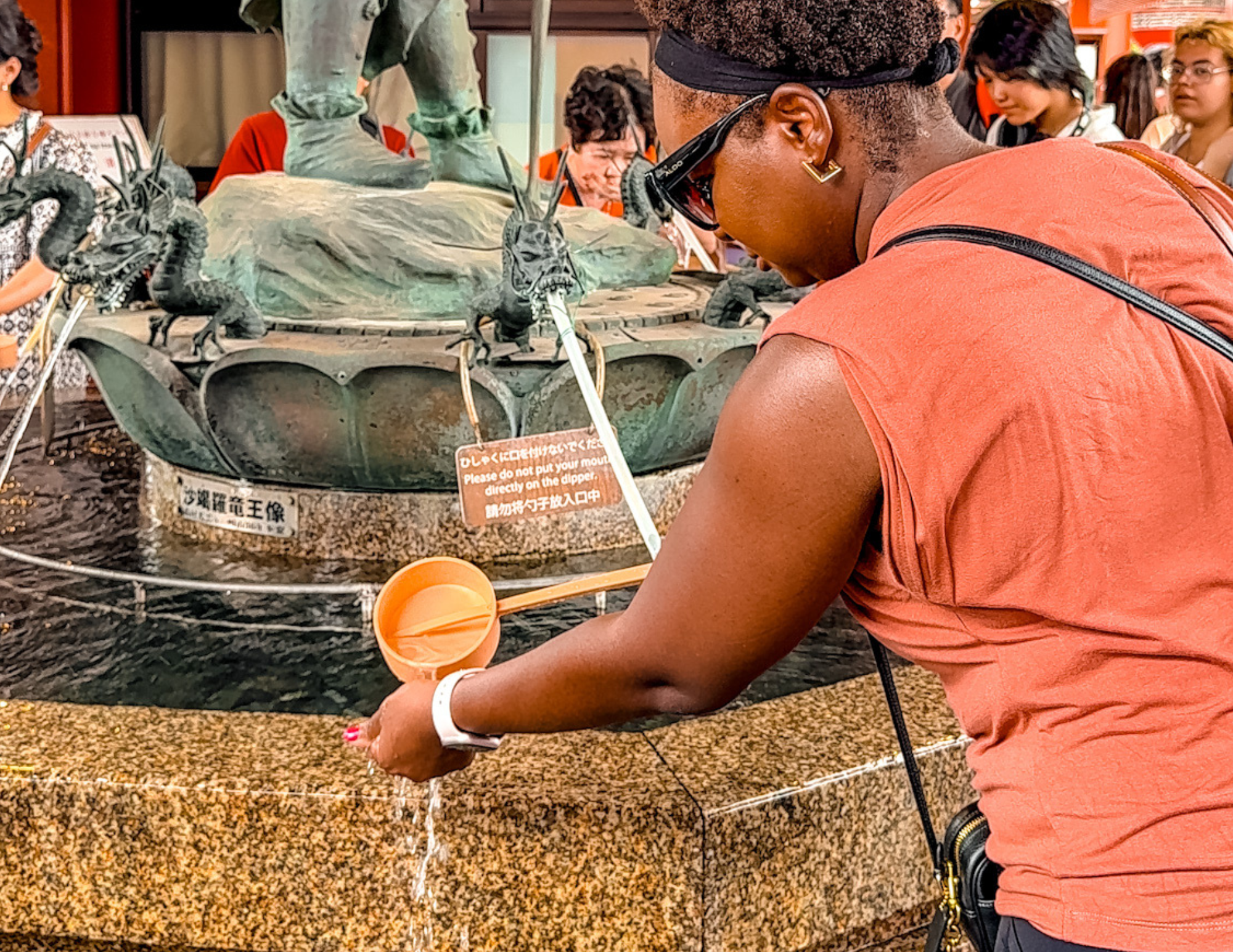If you’re planning a visit to Tokyo, Sensō-ji Shrine absolutely deserves a spot on your list. It’s Tokyo’s oldest temple, one of its most visited landmarks, and a place that blends ancient tradition with modern-day city life in the most unforgettable way.
We made our way to Sensō-ji during our time in Tokyo, and it was exactly the kind of cultural deep-dive we needed. There’s a reason it’s such a popular destination-for locals and visitors alike. Yes, it’s crowded. Yes, it’s touristy. But it’s also stunning. And powerful. And moving.
Whether you're here for the history, the photo ops, or the street snacks (no shame), Sensō-ji delivers.
A Bit of Background
Located in the Asakusa district, Sensō-ji (浅草寺) is Tokyo’s oldest temple, dating all the way back to the year 645. That’s not a typo—this site has been a place of worship and reverence for well over 1,000 years.
According to legend, two fishermen pulled a statue of the bodhisattva Kannon (Goddess of Mercy) from the Sumida River. Even though they kept returning the statue to the river, it kept finding its way back to them. A temple was eventually built nearby to honor her, and that became Sensō-ji.
Today, the temple is a mix of devotion and spectacle-drawing tens of millions of visitors a year, and still actively used by worshippers.
Entering Through Kaminarimon Gate
You’ll start your visit at the famous Kaminarimon, or “Thunder Gate.” It’s massive and impossible to miss—its giant red lantern is one of the most iconic symbols of Tokyo.
Expect crowds. People line up just to get a photo under that lantern. We joined the wave of tourists moving through the gate, but once you’re in, you’ll find a rhythm.
Nakamise Street: Souvenirs and Street Snacks
From the gate to the main temple, you’ll walk down Nakamise Shopping Street—a bustling stretch of vendors selling everything from traditional snacks and matcha sweets to kimono, chopsticks, and all the souvenir kitsch your suitcase can handle.
We took our time wandering through the shops, trying a few snacks (always checking the ingredients-we don’t eat pork), and soaking in the energy. It’s loud, colorful, and full of character. Yes, it’s touristy, but honestly, it’s also fun.
If you’re into trying Japanese street food, this is a great place to start. Just keep in mind, in Japan it’s customary to stop and eat in place-don’t walk and eat.
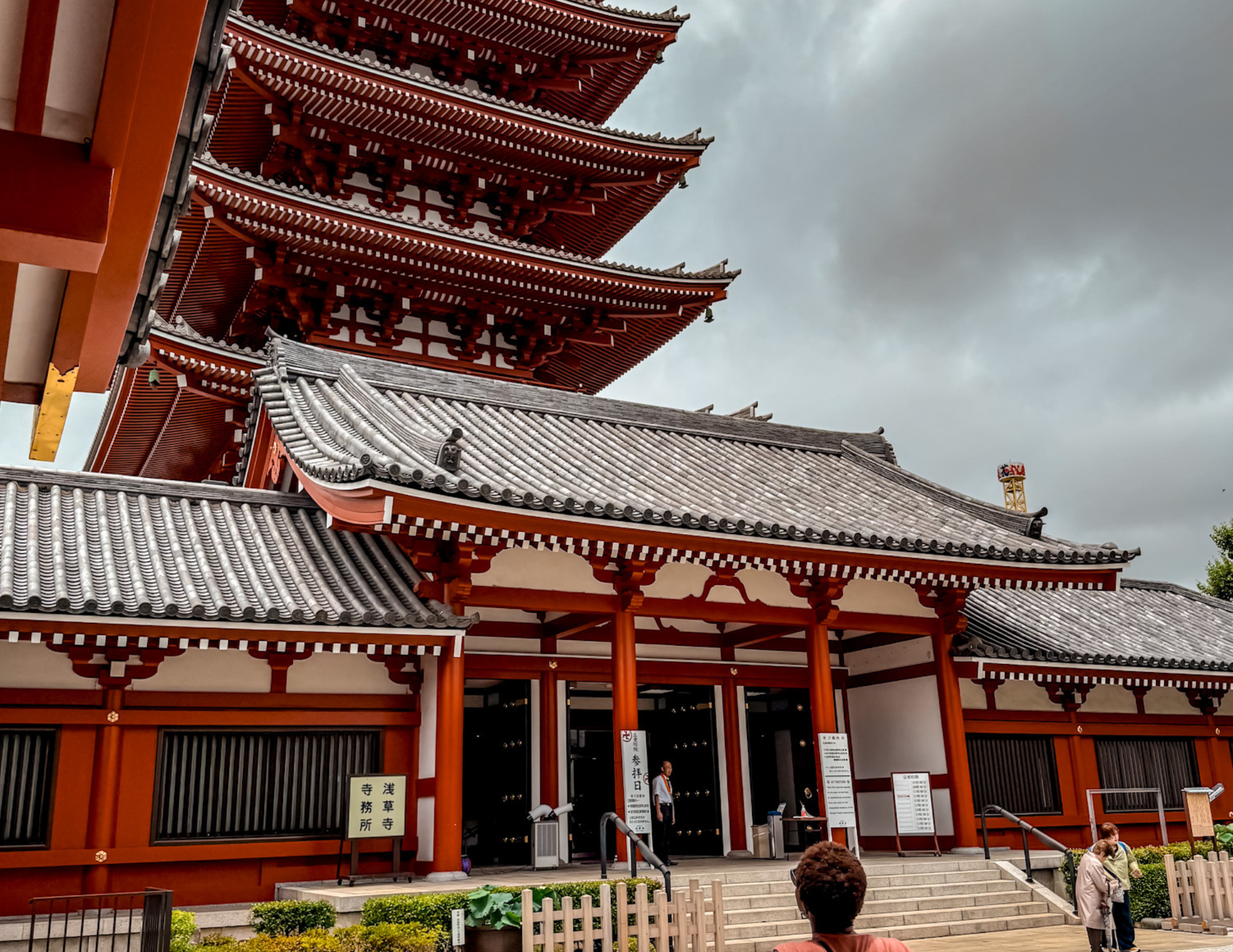
The Main Hall and the Five-Story Pagoda
At the end of Nakamise-dori, you’ll reach the main temple hall, and just off to the side, the five-story pagoda. The architecture here is jaw-dropping. Giant red beams, intricate gold details, and a sense of grandeur that’s impossible to ignore.
We joined the flow of visitors doing the traditional purification ritual-washing hands and mouth at the temizuya (water basin), then lighting incense and wafting the smoke toward ourselves at the giant incense burner near the front of the main hall.
Even with the crowds, there’s a quiet reverence here. You see people of all ages and backgrounds stepping forward to say prayers, toss coins, and bow their heads in respect.
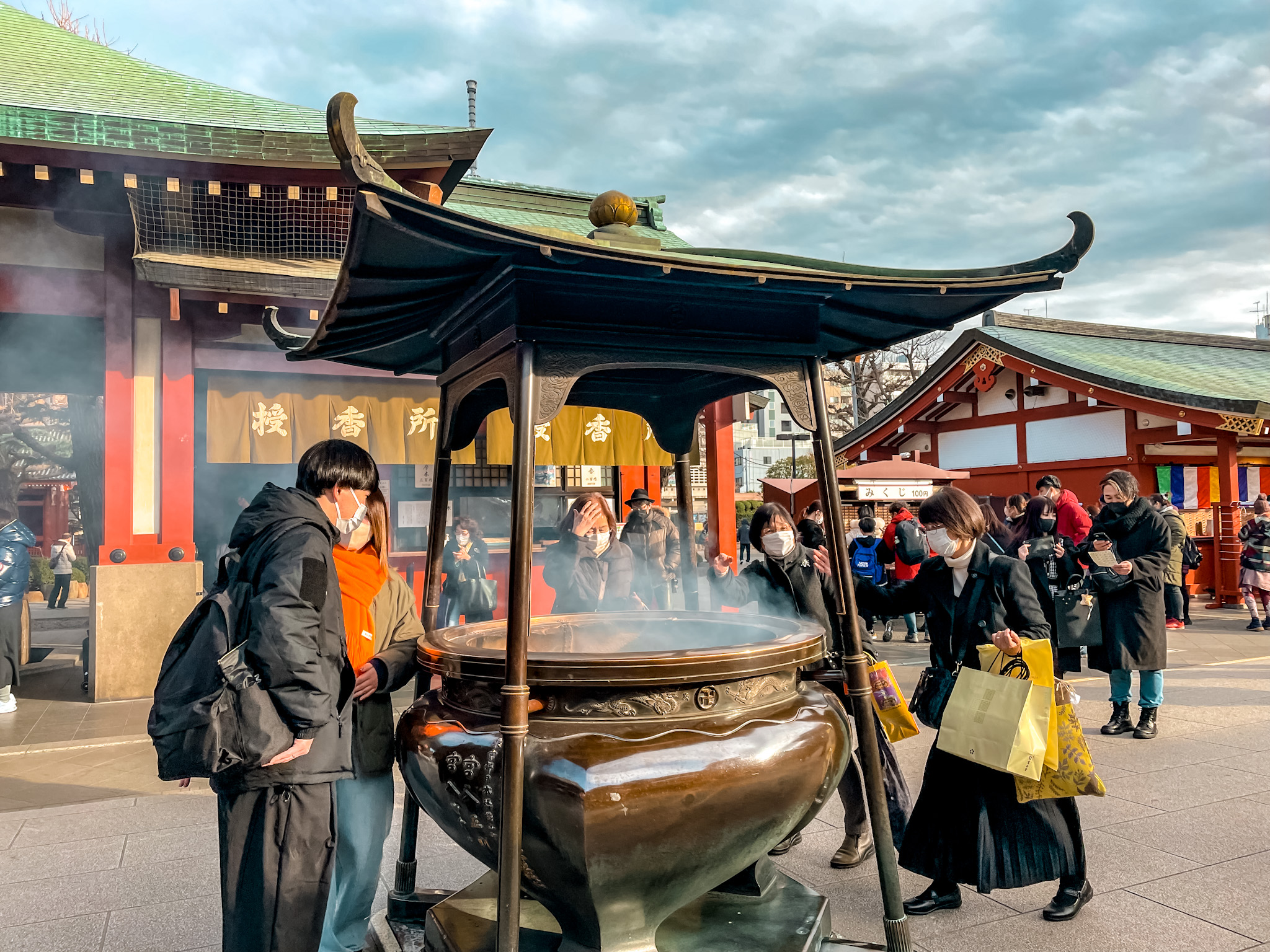
Omikuji Fortunes: Take Your Chances
One of the most fun parts of visiting Sensō-ji is drawing an omikuji, or paper fortune. For a small donation, you shake a metal box, pull out a stick with a number on it, and then find the corresponding drawer to receive your fortune.
Now be warned: if you get a “bad” fortune, you’re supposed to tie it to the rack nearby to leave the bad luck behind. We saw plenty of people doing that-no shame in it!
When We Visited
We came during a busy time of year, right around New Year, which is a huge season for visiting temples and shrines in Japan. That meant crowds, and I’m talking next-level crowds. Lines wrapped all the way around the complex, and it was nearly impossible to even step into the main hall.
But that’s also part of the cultural beauty here. Hatsumode-the first shrine or temple visit of the year-is an important tradition in Japan. People visit to give thanks for the past year and pray for blessings in the one ahead.
We decided to wait a little while and come back after the initial holiday rush calmed down. Totally worth it. Sensō-ji is incredible any time of year, but if you want a quieter experience, avoid weekends and national holidays if possible.
How to Get There
Sensō-ji is easy to get to by public transport:
-
From Asakusa Station (Tokyo Metro Ginza Line / Toei Asakusa Line) – Follow the signs and you’ll be at the Kaminarimon Gate in about 2–3 minutes.
-
From Tawaramachi Station (Ginza Line) – A short 7–8 minute walk to the shrine.
-
If you're coming from major hubs like Ueno or Tokyo Station, it’s a straight shot on the Ginza Line.
Tips for Visiting Sensō-ji
-
Wear comfy shoes. You’ll be walking a lot.
-
Get there early to beat the crowds and heat if you’re visiting in warmer months.
-
Bring cash. Some vendors and donation boxes don’t take cards.
-
Be respectful—this is a sacred place for many.
-
Don’t miss the chance to wander the side streets of Asakusa after your visit. The neighborhood has lots of charm and small surprises.
Revisiting this popular shrine
We also revisited Sensō-ji in summer 2025, and let me tell you-it was still packed. Even outside of peak holiday times, this temple stays busy. But the energy never feels overwhelming. There's something about the mix of tourists, locals, school groups, and worshippers all sharing space that just works. The sun was blazing, the lantern still stood proud, and the street snacks still hit the spot.
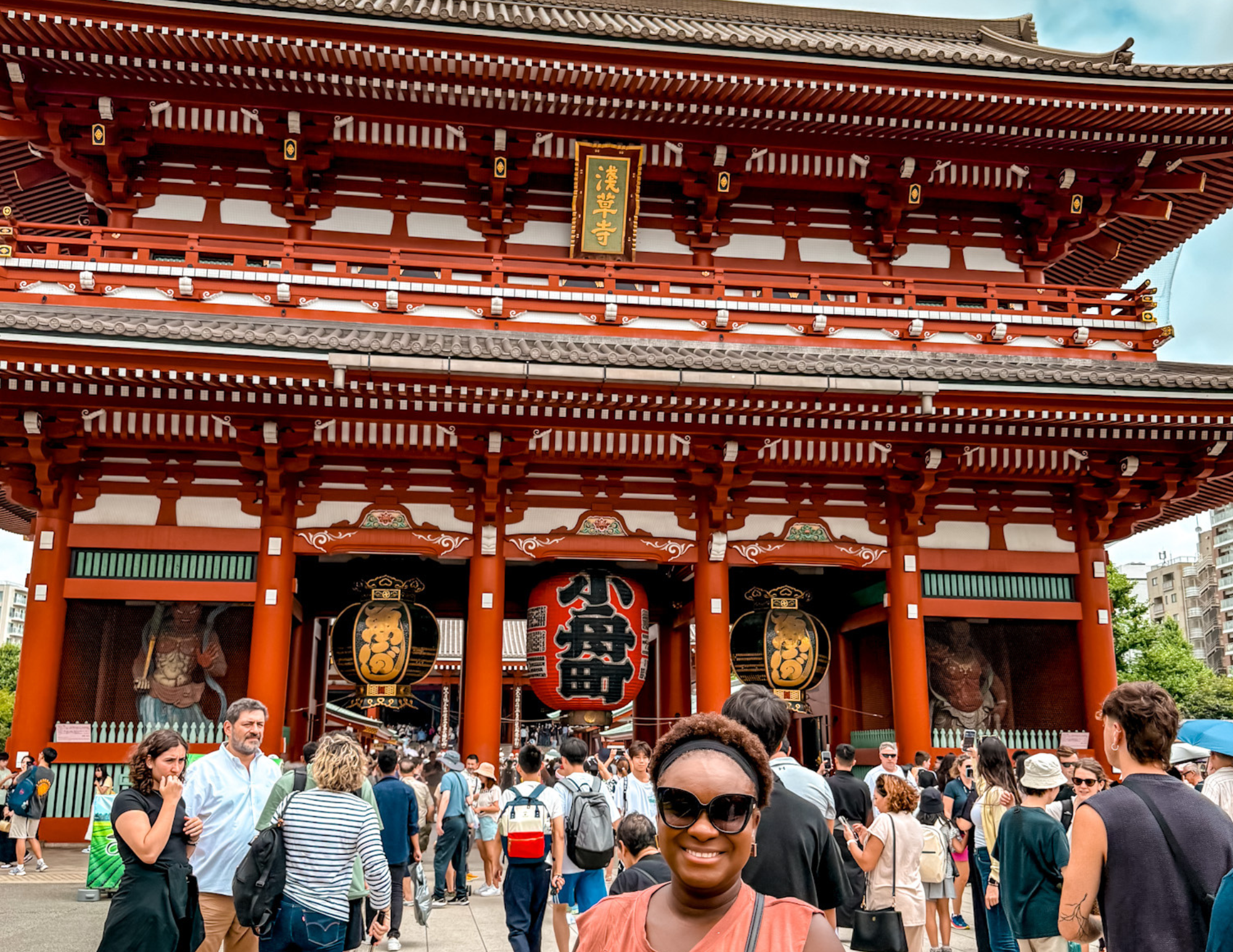
Sensō-ji is more than just a Tokyo must-see-it’s a deep dive into Japan’s spiritual and cultural history. Yes, it’s busy. Yes, it’s on every guidebook and travel site. But that’s because it truly is special.
Between the massive red gates, the scent of incense in the air, the sight of people from around the world lining up to draw fortunes, and the peaceful pagoda towering above it all-this place leaves an impression.
For us, it was one of those travel moments where you’re standing in the middle of something ancient and real, while all of Tokyo hums just outside the gate. I highly recommend making time for Sensō-ji on your Tokyo itinerary-even if it’s just to stand under that giant lantern and take it all in.
